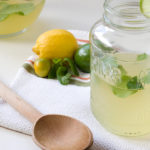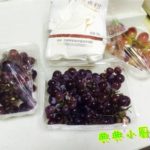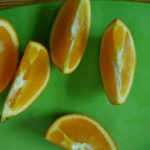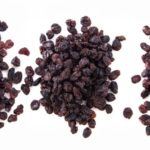Grapes is a type of fruit that can be eaten with the skin, but it is very difficult to clean because they usually grow in clusters, and the fruits are soft and easily crushed when scrubbed vigorously.
Some people only wash grapes with water, even wash the grape clusters under the tap, while others use salt water to wash grapes, thinking that this is enough to clean them. However, this method is not really effective and does not clean thoroughly.
To clean grapes without crushing them and preserve them for a longer time, you should follow the correct grape washing process below.
The correct grape washing process
First, remove any rotten or crushed grapes from the cluster, then use scissors to cut each grape, leaving a little stem on the fruit. Remember not to use your hands to separate the grapes, as it will cause the skin near the stem to tear, making it easier for dirt to stick to the exposed flesh.
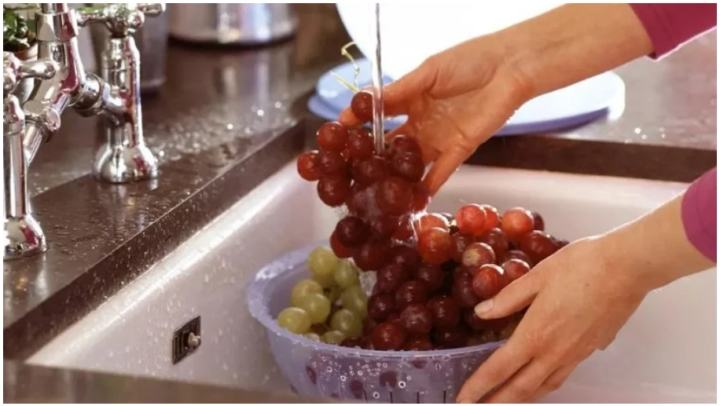 The following steps include:
The following steps include:
– Pour the grapes into a basin and add a little flour. Flour will help remove dirt and white powder residue on the grape skin.
– Add water to the basin, note that the water level should only be slightly higher than the layer of grapes.
– Gently stir the grape basin, then soak the grapes in water with flour for about 3-5 minutes. At this point, you can see the dirt and even insects floating on the water surface and sticking to the skin. Instead of soaking with flour, you can also dissolve boiled and cooled water or mineral water with other starches, baking soda and then soak the grapes for a few minutes, the effect is similar.
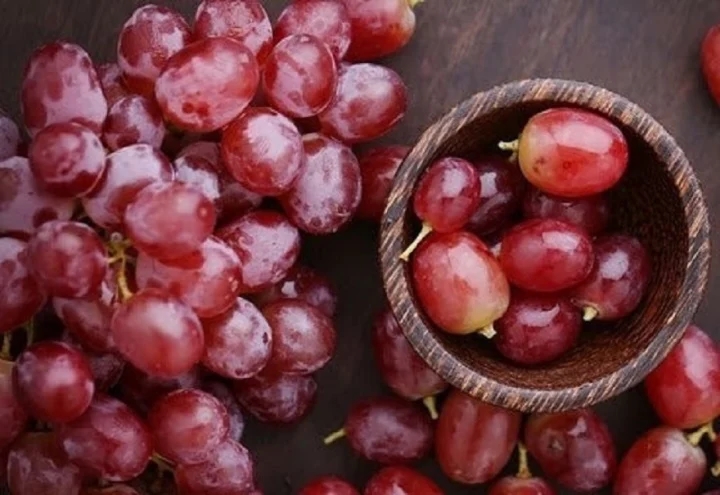
Cut each grape separately before cleaning is part of the correct grape washing process.
– Pour out the dirty water, rinse the grapes again with clean water.
– Rinse the grapes with diluted saltwater, then drain and use directly.
Note: After washing and draining, grapes should only be stored in the refrigerator for about 2-3 days.
How to choose sweet, safe grapes
Below are some tips to help housewives choose sweet grapes without worrying about preservatives.
Observe the stem
Fresh and delicious grape clusters have green stems, and they feel firm when touched, while the fruits are firm and juicy. On the contrary, if the stem is withered and the fruits are not plump, those are grapes that have been picked for a long time, and you should not buy them.
In addition, you should avoid buying grape clusters with fruits that are fresh but have withered stems, or vice versa, as they are often grapes that have been soaked in preservatives. If the grapes are stored for many days and the stem is still fresh, it is likely that they have been treated with chemicals, which are not good for health and should not be consumed.
Observe the grape skin
Choose grapes with vibrant-colored and powdery skin because those are freshly picked grapes. If there is very little or no powdery substance, those are grapes that have been stored for a long time and are not fresh, so do not buy them.
Based on the shape
When choosing grapes, go for fruits that are of moderate size, without any bruises, slightly soft, with a shiny and smooth skin. Avoid buying grapes that are soft and dull with dark spots.
It is recommended to choose grape clusters with many individual grapes rather than tightly packed clusters. Loose grapes are usually juicier and sweeter, while tightly packed grapes will have a weaker taste and uneven shape when separated.
According to VTC.vn
Comparing Benefits of Fresh and Dried Grapes
Which is better for your family’s health, fresh grapes or raisins? Vietnamese families often have a love for both of these snacks, both of them providing a good source of various vitamins and minerals. Let’s explore the benefits of fresh grapes and raisins and see which one has the most nutritional value.


























